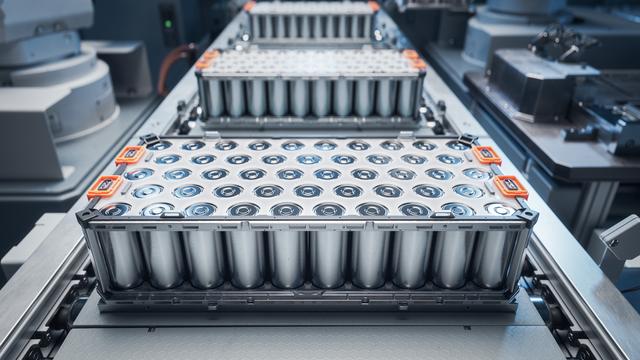World News28.08.2024
Japan’s manganese-boosted EV battery hits game-changing 820 Wh/Kg, no decay

QAZAQ GREEN. Japanese researchers at Yokohama National University have demonstrated a promising alternative to nickel and cobalt-based batteries for electric vehicles (EVs), reports Interesting Engineering.
Their approach uses manganese in the anode to create a high-energy density battery that is both cost-effective and sustainable.
EV manufacturers prefer nickel and cobalt batteries since they deliver higher energy density, translating to more range in a smaller battery pack. However, both components are expensive to source and relatively rare, making them unsustainable options when EV usage soars worldwide.
CGI art and firetex, the best of IE this weekThe video player is currently playing an ad. You can skip the ad in 5 sec with a mouse or keyboard
Lithium-ion (Li-ion) batteries are the preferred rechargeable battery option for most electronics. However, their lower energy density puts them on the back foot regarding EVs. Research and development efforts to improve them have led to the introduction of better Li-ion options.
Manganese in the anode material alongside lithium, such as LiMnO2, has also been experimented with. However, applications have been limited due to the electrode’s poorer performance. Researchers at Yokohama National University (YNU) in Japan have addressed this issue in their recent work.
Working with a monoclinic system
After extensively studying LiMnO2 in its various forms using X-ray diffraction, scanning electron microscopy, and electrochemical methods, researcher Naoaki Yabuuchi and his team at YNU found that a monoclinic layered domain activates the structural transition of LiMnO2 to a spinel-like phase. A monoclinic system is a type of group symmetry of a solid crystalline structure.
LiMnO2 improves the electrode material’s performance by facilitating the phase transition. Without the phase transition, a LiMnO2 electrode has sub-optimal performance.
“From this finding, nanostructured LiMnO2 with the monoclinic layered domain structures and high surface area has been directly synthesized using a simple solid-state reaction,” Yabuuchi said in a press release.
The reaction has no intermediary steps and can be directly synthesized from two components using a calcination process.
Performance improvements with Mn
Post-synthesis testing revealed that a battery with a LiMnO2 electrode reached an energy density of 820 watt-hours per kilogram (Wh kg-1) compared to a 750 Wh per kg obtained with a nickel-based battery. Only lithium-based batteries have an even lower energy density of 500 Wh per kg.
Nanostructured LiMnO2 with domain structures and larger surface area delivers large reversible capacity with good capacity retention with excellent charge rate-capability, which is an essential character for electric vehicle applications. Image credit: Yokohama National University
The researchers told Interesting Engineering in an email that manganese, when used in other polymorphs, typically shows half the energy density capacity.
Previous work using manganese reported a voltage decay in batteries, wherein voltage output dropped over time, reducing the electronic device’s performance. However, with the LiMnO2 electrode, the researchers did not observe such outcomes.
Manganese dissolution, either due to phase changes or a reaction with an acidic solution, can still occur. The press release added that the researchers plan to address this using a highly concentrated electrolyte solution and a lithium phosphate coating.
The researchers are confident that their work has contributed to developing a new offering that is competitive with existing options, sustainable to produce, and environmentally friendly in the long run. They look forward to commercializing their technology and its usage in the EV industry.
The research team added in their email to IE, “We have found a very cheap methodology, and that is the important finding of our study. “
Kazakhstan and UAE reaffirm strategic energy partnership with 1 GW wind project
Solar becomes EU’s top power source for the first time ever
How decentralised renewables transform healthcare services in rural Zimbabwe
Chinese company to build solar and wind power plants in Kyrgyzstan
Seaturns raises €2.45 million to industrialize wave energy technology and accelerate global rollout
Trump signs executive order to end subsidies for wind and solar energy
Uzbekistan's solar and wind power plants generate 5 Billion kWh since beginning of the year
Green Corridor Alliance JV registered in Baku to promote green energy development in Central Asia and the South Caucasus
In the EU renewable energy supply grew by 3.4% in 2024
IRENA accepting renewable energy project proposals in Central Asia until August 15
Astana to host Electronica Expo Kazakhstan Electronics Exhibition
WB gives rundown of Azerbaijan's green energy grid volume prospects
US solar sets new records as renewables nearly match natural gas – EIA
‘Wings’ on poles: Bill Gates-backed breakthrough wind turbine facility breaks ground
Perovskite tandem solar cell achieves new efficiency record
Kazakhstan and China endorse draft SCO joint statement on sustainable energy development
Innovative research on organic solar cells for space applications
Kazakhstan and Uzbekistan drive green energy progress in Central Asia
KazMunayGas launches pilot green hydrogen project in Atyrau
How private homeowners in Kazakhstan can make money from solar panels











